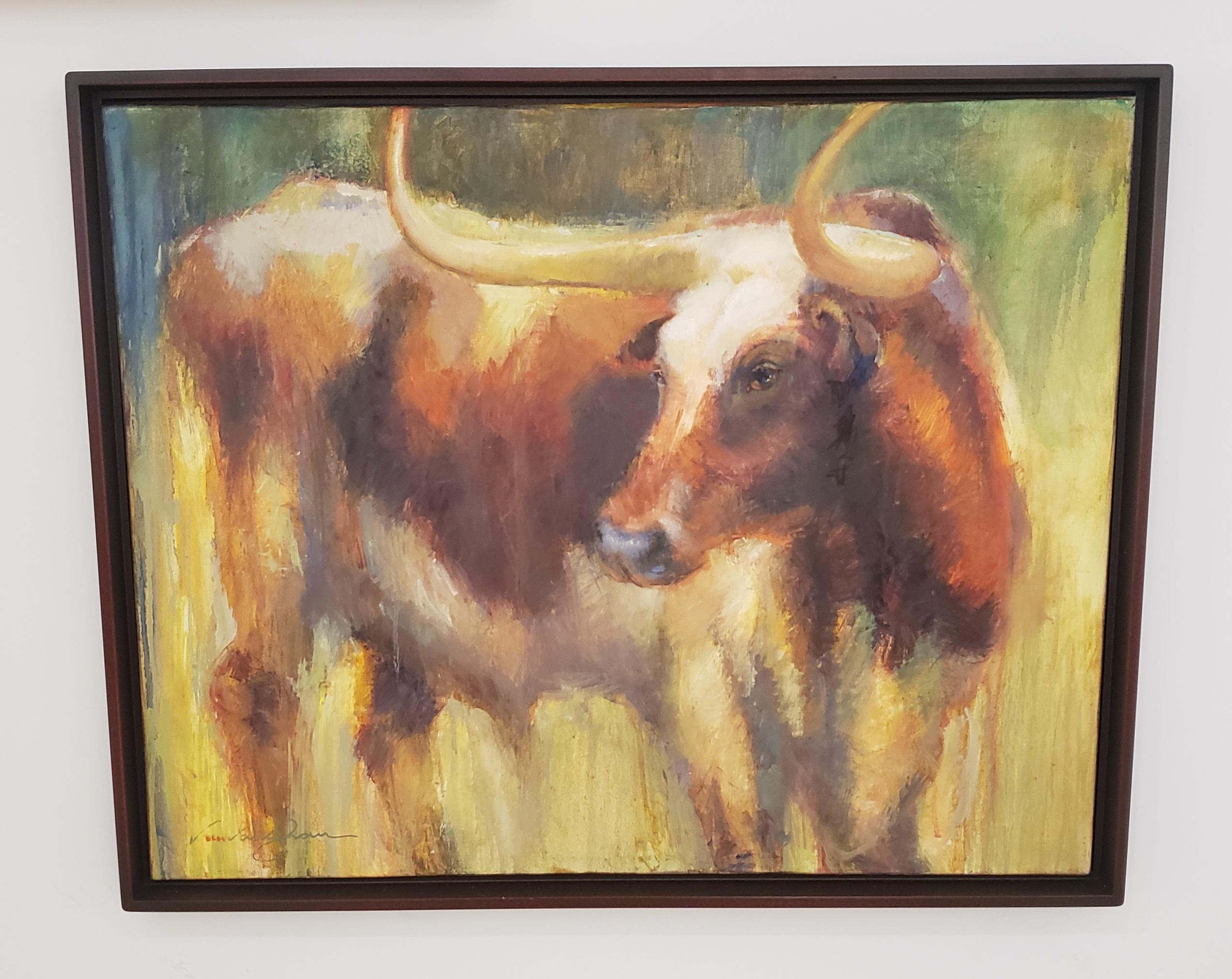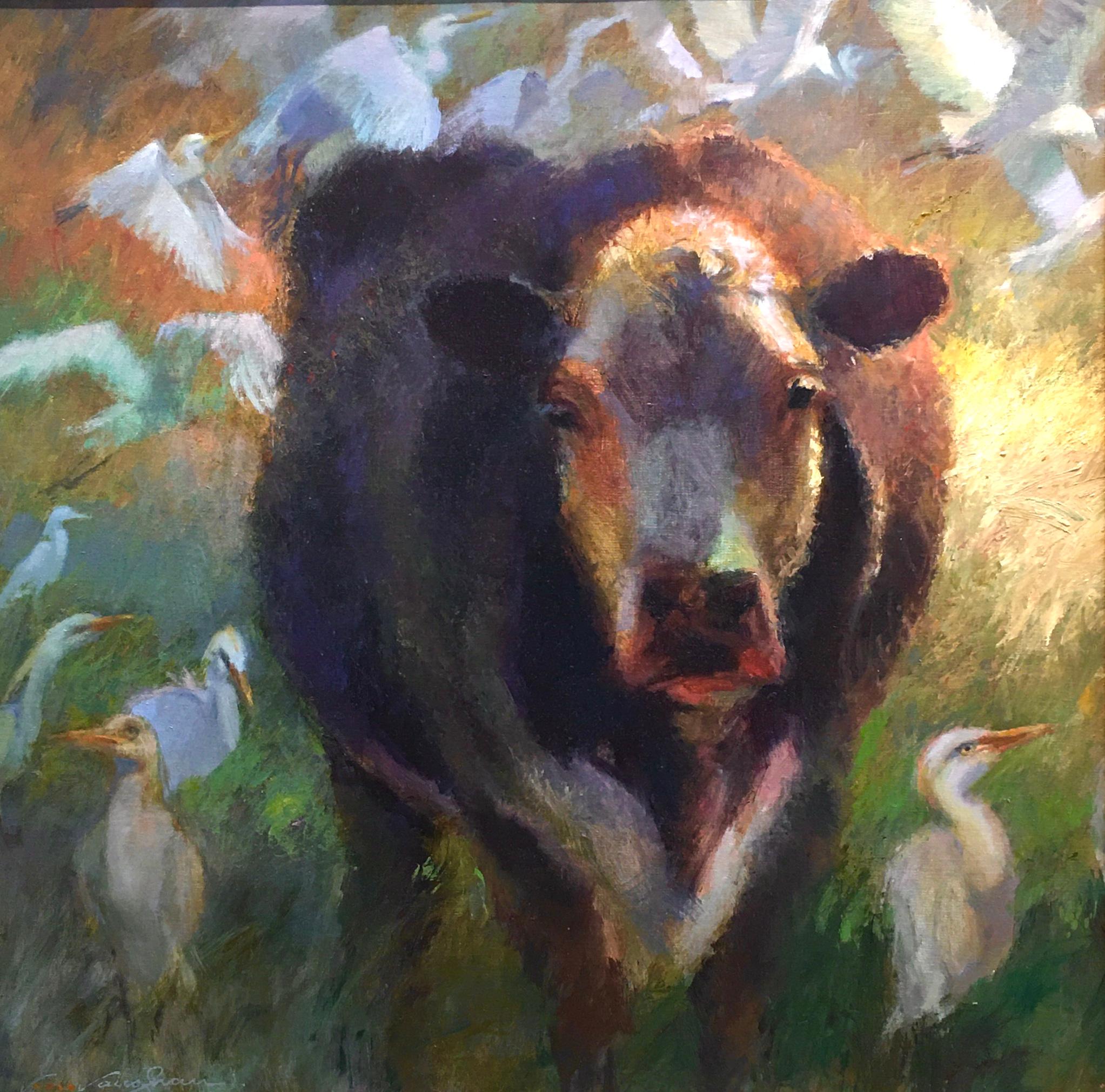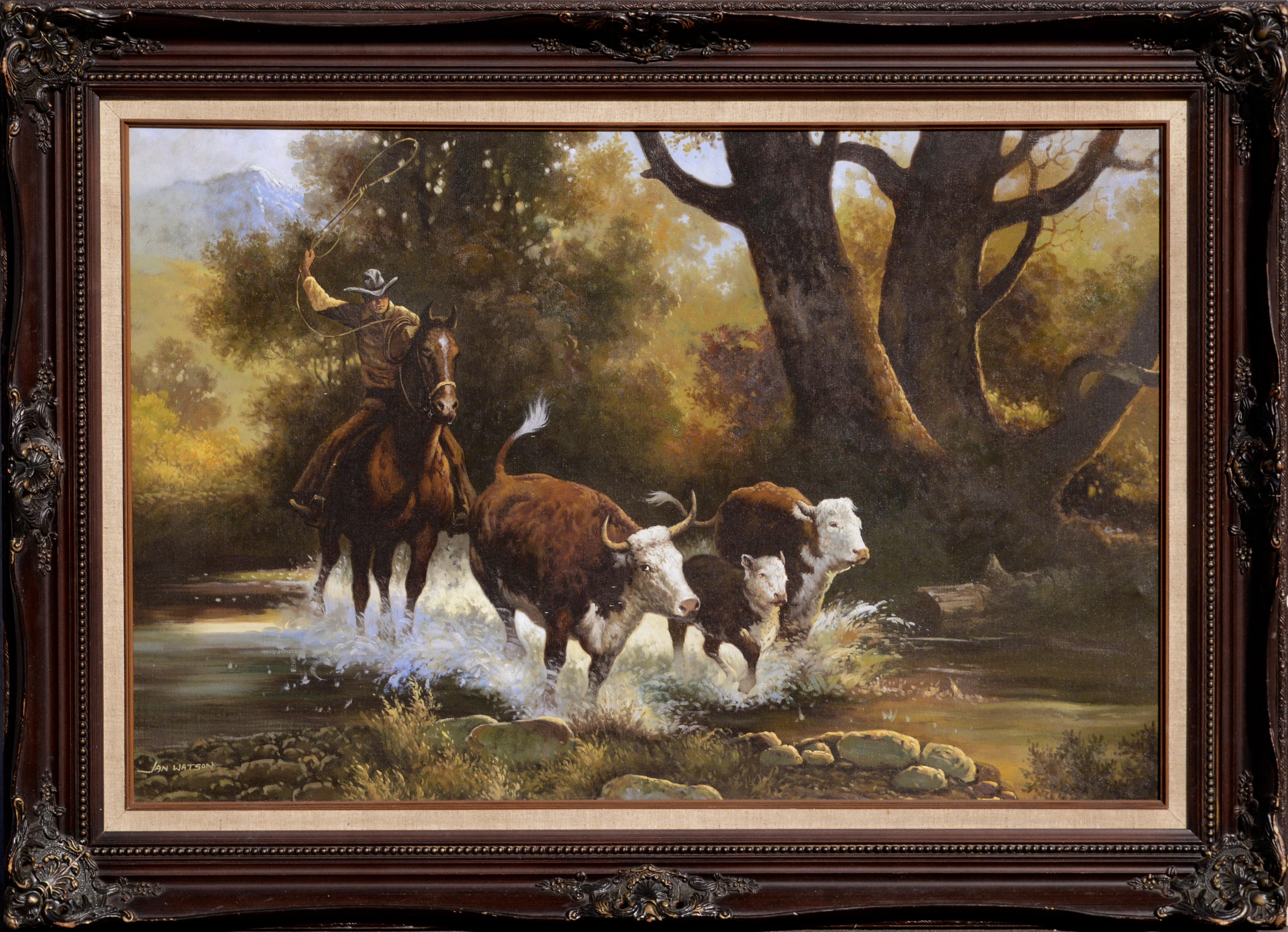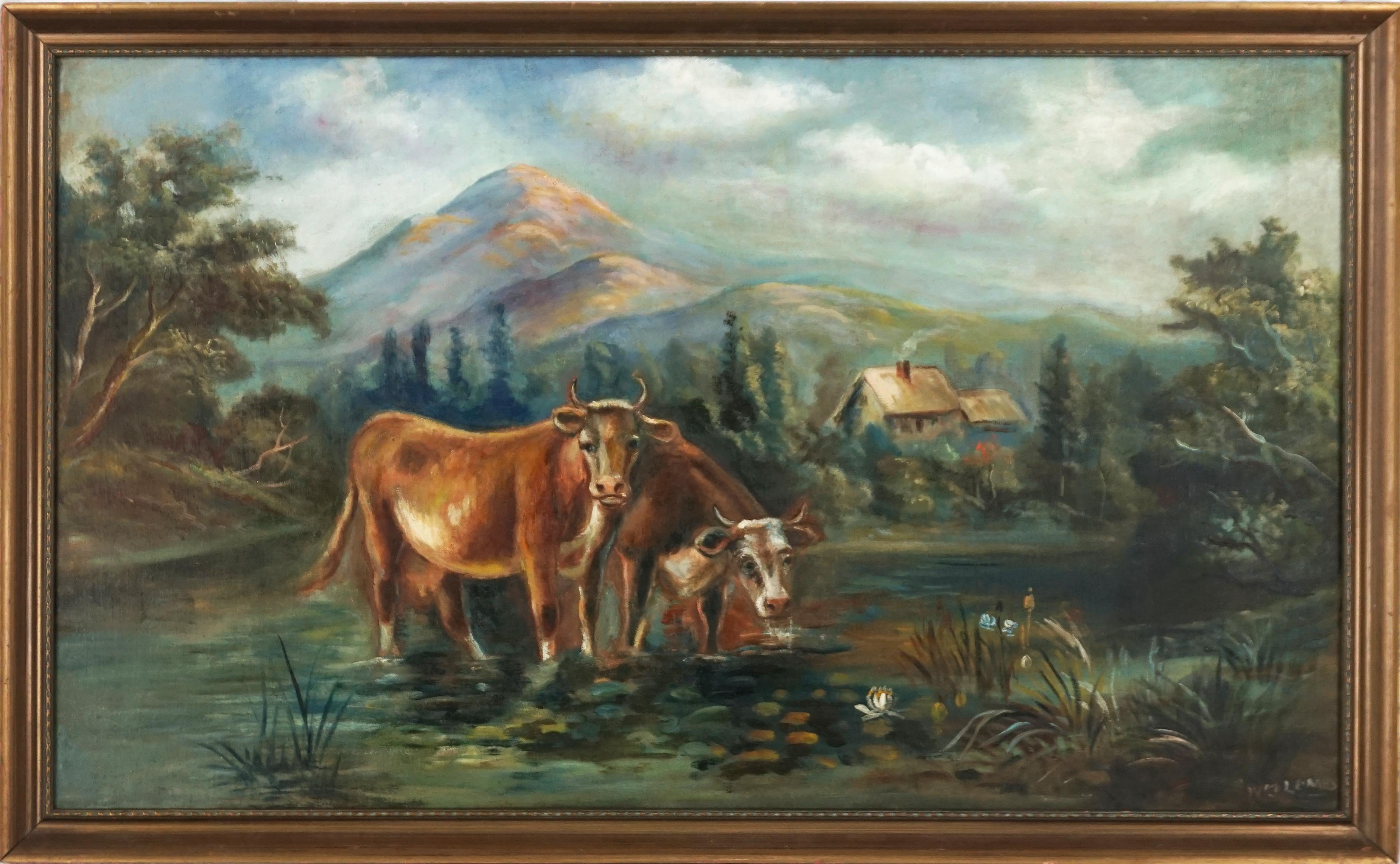Items Similar to Alaskan Husky Dogs - The Howl of the Malamute - Men's Adventure Story
Want more images or videos?
Request additional images or videos from the seller
1 of 11
Dan ContentAlaskan Husky Dogs - The Howl of the Malamute - Men's Adventure Story1930
1930
About the Item
Daniel Content painted in the grand tradition of the Golden Age of Illustration, in the style of Dean Cornwell, N.C. Wyeth, J.C Leyendecker and shared a studio with Mead Schaeffer and studied under Harvey Dunn. His illustrations were published in Colliers, Cosmopolitan, McCall's among others This is a very large and powerful work that is masterfully painted in a confident style
Property from the Tip and Patricia Freeman Collection
Signed lower left
- Creator:Dan Content (1902 - 1990, American)
- Creation Year:1930
- Dimensions:Height: 28 in (71.12 cm)Width: 56 in (142.24 cm)
- Medium:
- Movement & Style:
- Period:
- Condition:Work has not been cleaned or relined. Existing damar varnish on surface creates scattered yellowing. Stretcher impression. Slight undulation of canvas is mostly visible with raking light or extreme side view. Otherwise presents very well.
- Gallery Location:Miami, FL
- Reference Number:1stDibs: LU38538787362
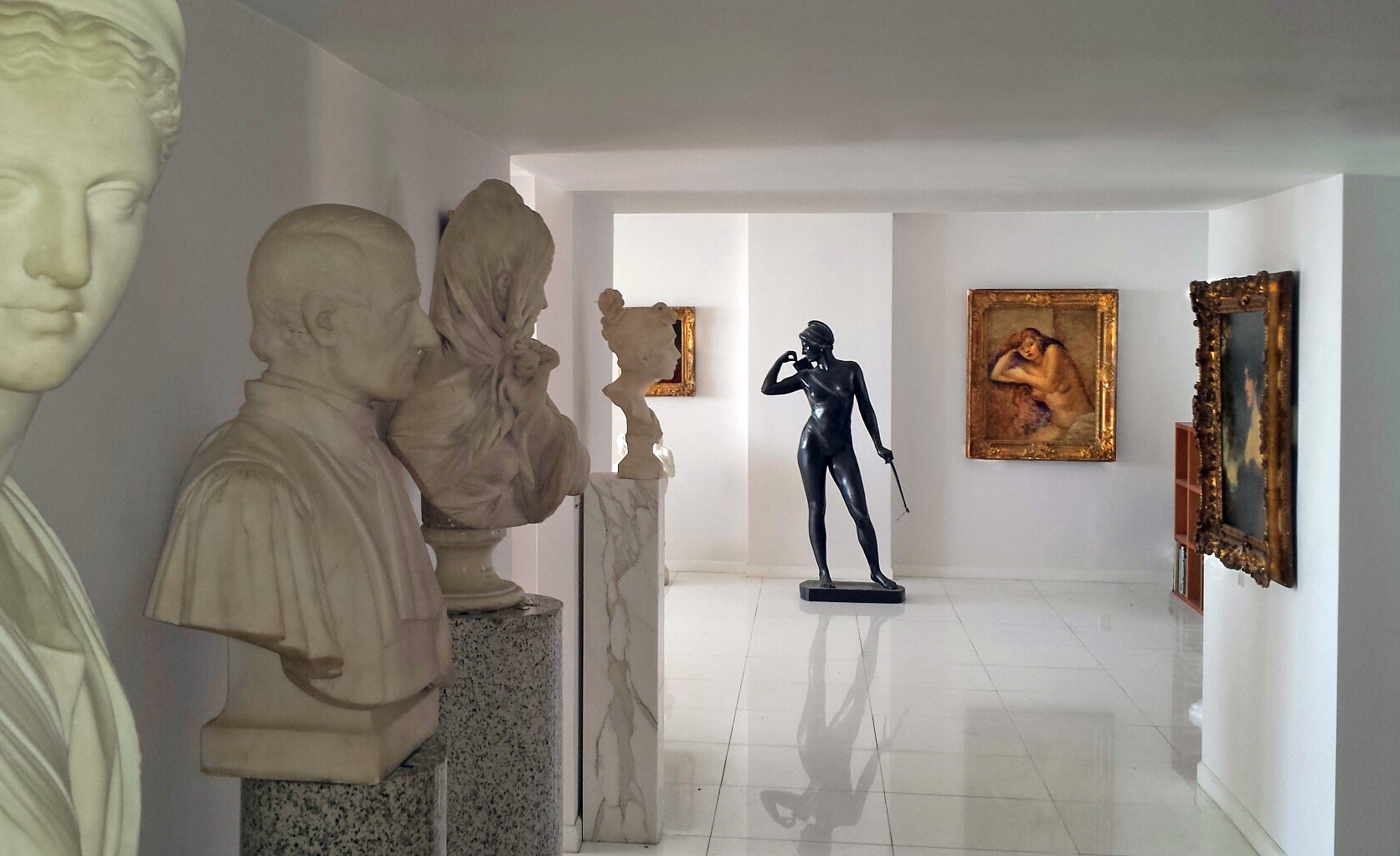
About the Seller
4.9
Platinum Seller
These expertly vetted sellers are 1stDibs' most experienced sellers and are rated highest by our customers.
Established in 2005
1stDibs seller since 2016
102 sales on 1stDibs
Typical response time: 1 hour
- ShippingRetrieving quote...Ships From: Miami, FL
- Return PolicyA return for this item may be initiated within 3 days of delivery.
More From This SellerView All
- CanadianMountie Gazing at ButteBy Frederic Kimball MizenLocated in Miami, FLA majestic Canadian mountain rises to the sky with a small Canadian Mountie on hours viewing the scene, Mizen uses a creative technique of exposing...Category
1920s American Impressionist Landscape Paintings
MaterialsGouache, Fiberboard
- The Night of the Ram - Desolate Surreal LandscapeBy Eugene BermanLocated in Miami, FLA desolate, surreal landscape with a haunting and mysterious outdoor still life featuring Ram's head emerging from the daisies and underbrush. Classical statues sit on the horizon l...Category
1960s Surrealist Animal Paintings
MaterialsCanvas, Oil
- Three Bucks in the Fontainebleu ForestBy Rosa BonheurLocated in Miami, FLRosa Bonheur was the most famous female artist of the 19th Century. We are grateful to Annie-Paule Quinsac for confirming the authenticity of this painting. The work is best viewed with top gallery light to bring out colors ____________________________________________ Rosa Bonheur: Three Bucks in the Fontainebleau Forest, erroneously Stags or Monarchs in the forest Oil on canvas, 29 x 24 inches [74 x 61cm], signed and dated lower left, Rosa Bonheur 1886 The discovery of this painting, a reinterpretation of Bonheur’s most iconic work Le roi de la Foret, [Monarch in the forest]is a significant event in the artist’s scholarship. In forty years of study, I was not aware of its existence and did not find any reproduction of it throughout my extensive reading. Bought by the present owner at the Stamford Winter Auction in 2008, it had been the property of a certain Captain [ name illegible] until January 29, 1920, or from that date {?}. The label on the back of the canvas reads: “Collection of Captain J.H.Gaucis Jan.29,1920”. [the handwriting on the label is extremely unusual; my deciphering of it induces me to propose this last name, Latvian in origin] […] This work could not have been offered among the 95 paintings that compose the catalog section titled “Stags, Hinds, Roebucks,” [ NN.320-415] in the catalog of the Rosa Bonheur Posthumous Sale organized by the Galerie Georges Petit in Paris, which included over two thousand pieces kept in the studio and not sold during her life time : it does not correspond to any of the description or measurements given in these catalog entries. The number 5527inscribed in red on the back of the canvas could refer to the painting having be handled by the Knoedler Galerie, Paris and New York, which after Bonheur’s death, that of Ernest Gambart (1814-1902and George Petit, (1856-1920) was instrumental in the continued diffusion of her work in the US, maintaining her prices that had crashed elsewhere in Europe. Despite difficulties in tracing the provenance history, the attribution to Rosa Bonheur, cannot be denied. Stylistic and iconographic characters are typical of her expressive means in the late 80’s. Also, it cannot be questioned that the calligraphy of signature and date is hers. The work depicts three male deers- or bucks- of different age, in a trail, deep in the forest at twilight, just after sunset toward the end of Fall. The two big ones, have stopped in their track, facing the beholder frontally; the small one, in profile, seems ready to move in another direction. The umbrella term deer, or the more specific one buck {male deer} could both be used as title to this painting, rather than stag, which implies an old majestic senior male deer, considered the King of the forest also called Monarch. In the Cervidae family, the number of points of a deer’s antler is one of the indicators of age, along with body mass and overall size. In our painting, the most prominent stag is massive and has a twelve points antler – qualifying as Monarch. The one immediately behind him exhibits an eight points antler and appears strong and imposing as well does not possess but not his companion’s poise. It is a mature stag. The last one, slender, shoulders not quite muscular yet, with barely six points to his antler, could not be more than two years old. The intensity of expression of the two older stags and their presence in the landscape which is rendered as their stage, are characteristic of Bonheur’s rapport to animals and nature. The painting’s varnish has deteriorated and forms a film that will need to be removed through a cautious cleaning. It is particularly important that the transparent haze that evokes the humidity of the forest at that crucial moment of the light be preserved. It contributes to the painting vibrance. Since 1860, when Rosa Bonheur moved to the Chateau of By, which she had bought with her companion Nathalie Micas, the Fontainebleau Forest which was at a stone through of her property, became ground of studies and the Cervidae a common subject. By then, she would already sketch en plein air, and months or years later, create paintings from start to finish in the studio using the visual material collected while walking through nature or observing animal in their milieu. Her first image of the Great Monarch in the forest, represented frontally and in a similar forest background is the 1868 painting Le cerf de Saint Hubert [Hubertus’ Stag], an illustration of the legend of Saint Hubertus in which she included a cross between the stag’s antlers. As the story as it, Hubertus was a passionate hunter and would often forget his religious duties to go hunting. On a certain Sunday in the depth of a forest, where he had ventured alone, he began to pursue a stag The animal faced him and while a cross appeared between his antlers, the voice of God was heard, directing him to repent ad respect all animals. Rosa Bonheur was herself a hunter but also a spiritualist, influenced by the Saint Simonian creeds and by spiritism. She believed that certain animals had a soul. I personally think that magnificent monarchs and the St Hubertus...Category
1880s Academic Animal Paintings
MaterialsCanvas, Oil
- Silent Paradise - Leopards, Zebras, Panther and HippoBy Gustavo NovoaLocated in Miami, FLLeopards, Zebras, Panther and Hippo calmly lounge in a tropical paradise surrounded by lush foliage and flowers at the edge of azure blue water. Signed lower right. Signed and dated on verso Provenance: Private Collection Condition: Excellent, Unframed. Chilean-born Gustavo Novoa became represented exclusively by the Wally Findlay Galleries...Category
2010s Surrealist Landscape Paintings
MaterialsCanvas, Acrylic
- Astrology Fantasy - "A Love by the Stars" - Sci-Fi Alignment of the PlanetsLocated in Miami, FLHane paints a dreamy fusion of earthy and celestial bodies with circling birds around a central vertical axis. Created on assignment for De Beers' highly published A Diamond is Forever" campaign. "A love by the stars was important. Until the right man of the wrong sign put his star on my finger. And I entered his house with my love. The artist created the painting to be the night ... so it appears a little dark in natural light. Best viewed with a top and key light to bring out the colors. Hane painted the covers of the Collier-Macmillan editions of C.S. Lewis's Chronicles of Narnia books, as well as such Simon & Schuster publications as Carlos Castaneda's The Teachings of Don Juan and A Separate Reality. In 1963, Hane was hired to do a full-page illustration for Esquire magazine; he moved to New York in 1965. He married Elaine Miller...Category
1970s Surrealist Landscape Paintings
MaterialsCotton Canvas, Acrylic
- Evening on the Summit - Deer on a mountain topBy Charles Courtney CurranLocated in Miami, FLThis work embodies a beautiful color scheme that is evident in the treatment of the sky and the huge cloud structure. that Signed and Dated lower right Original Period Frame On Vers...Category
1930s Post-Impressionist Animal Paintings
MaterialsOil
You May Also Like
- Gaze , Texas Cattle, Impressionism , Texas Ranches, Texas Artist, FramedLocated in Houston, TXGaze shows the famous Texas Longhorn on a Texas ranch. It has an Impressionistic Style as seen in many of Virginia Vaughan's Texas paintings. She is kno...Category
2010s American Impressionist Animal Paintings
MaterialsCanvas, Oil
- With Few Egrets, Texas Cattle, Impressionism Texas Ranches, Texas Artist, No EgretsLocated in Houston, TXLOOK FOR FREE SHIPPING AT CHECKOUT With Few Egrets shows the cattle on a Texas ranch. This was painted from a plein aire painting done on a ranch in South Texas near the Mexican bor...Category
2010s American Impressionist Animal Paintings
MaterialsOil, Canvas
- Cowboy Driving Cattle, Realist Figurative LandscapeLocated in Soquel, CADynamic Western figurative landscape scene of a cowboy and cattle, depicted with realist detail as they splash through a river, by unknown artist Jan Watson (American, 20th Century)....Category
1980s American Impressionist Animal Paintings
MaterialsOil, Canvas
- "King of the Range" - Mid Century Western Fighting StallionsBy Bernard Preston ThomasLocated in Soquel, CAWonderful and dynamic western painting of two wild fighting stallions by listed artist Bernard Preston Thomas (American, 1918-1992), dated 1951. Signed and dated lower left corner and on verso. Image size: 28"H x 36"W. Presented in rustic painted frame size: 34"H x 41"W x 3"D. Originally from Sheridan, Wyoming, he loved football and art, giving up the sport to concentrate on a career in art. Thomas graduated from Woodbury College in Los Angeles with a Bachelor of Science degree, earning the Leo Youngsworth Award for outstanding senior art student at Woodbury. He became a camouflage technician at the outbreak of WWII and caught the attention of General Patton...Category
1950s American Impressionist Animal Paintings
MaterialsCanvas, Oil
- Arctic Polar Bear by Helen Ray HarrisBy Helen Ray HarrisLocated in Soquel, CADeep pastel colors enliven this painting of a polar bear in the ice by listed California artist Helen Ray Harris (d.2001). Signed lower left corner "H. Harris". Unframed. Image, 16"H x 20"W. Helen Ray Harris, 20th Century, was born in England. She received her initial art training in her native England and immigrated to the United States at age 19. Prior to her arrival in the U.S., and shortly afterwards, she worked repairing and restoring antique furniture...Category
1980s American Impressionist Animal Paintings
MaterialsCanvas, Cardboard, Oil
- Large Scale Early 20th Century Bucolic Mt. Hood LandscapeBy William M. LemosLocated in Soquel, CAGorgeous landscape with two cows drinking water in a pond with Mt. Hood in background by listed artist William M. Lemos (American, 1861-1942). Signed "W.M. Lemos" lower right. Presented in vintage gilt-toned frame that shows wear (included as-is). Condition: Good: previously owned and used, with little or no signs of wear and is in good condition. No structural issues. Image size: 29"H x 49"W. Born in New York, Professor Lemos moved to San Francisco in 1887 where he established a studio at 106 Geary Street. He later moved to Santa Cruz in 1896, where he settled, painting murals for many local businessmen and the Santa Cruz Beach Boardwalk. As a boy Lemos earned money by wandering the streets and painting on request. Arriving in San Francisco in 1887, he established a studio at 106 Geary. With his wife Mabel, he worked in Los Angeles for a few years in the 1890s. After settling in Santa Cruz in 1896, he painted murals for many local businessmen. When the original Beach Casino was built there at the Boardwalk in 1904, Lemos was the first concessionaire and worked there for nearly 40 years. On his platform in the Casino, Lemos did paintings of redwoods, still lifes, forest fires, beach scenes, and marines. Many of his oils were done on redwood slabs which were popular with the tourists; in the early days these paintings sold for one dollar and up depending on the size of the work. After his vision failed and he was unable to paint, his last years were mostly spent fishing off the Municipal Pier with a friend who baited his hook for him because he could no longer see. In the March 27, 1941 Santa Cruz Sentinel News Lemos reminisced, "Them were the days when the Boardwalk was only twelve feet long and when business got slow I picked up my shotgun and went across the street and shot ducks where the Casa del Rey Hotel now stands." Exhibited: Calif. State Fair, 1885; Mechanics' Inst. (SF), 1889. In: Santa Cruz City Museum; Wawona Hotel (Yosemite). Edan Hughes, "Artists in California, 1786-1940" His mother was Julia Lemos, a Chicago artist famous for her depiction of the Chicago fire, “Two of Julia’s children became successful artists. Her eldest son, William, was a naïve still life, landscape, and mural painter. As a young boy in New York, he would wander the streets, earning money for the family, by ‘painting on request.’ At age 26, William moved to San Francisco, California. He opened an art studio and kept it running until he moved to Santa Cruz with his wife, Mabel, in 1896. During this period, he worked as a fresco artist painting ‘murals for many local businessmen.’ Exhibited California State Fair, Sacramento, 32nd annual, per Sacramento Daily Union, September 9, 1885. and article goes on to say “William Lemos and wife, Sacramento – Art school exhibits in which are shown such a variety of designs in decorative art, flower painting, and ornamentation, that one must give time to the examination.” Exhibited Mechanics Institute, San Francisco, 1889. “Lemos and his wife were in Fresno California 1890...Category
Early 20th Century American Impressionist Landscape Paintings
MaterialsCanvas, Oil
